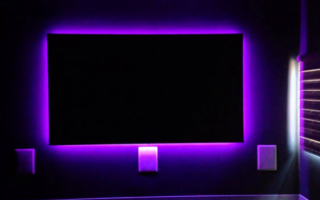LED backlighting market will grow strong from 2016 to 2023.
in Sylodium, About LED products, depending the business you can have different target actors, for ex. if you are a manufacturer:
LED for cities: manufactureres – institutions. LED to iluminate locals: manufacturers – companies. LED for houses, manufactureres – public. LED the basic diodo of Laser Technology. Manufacturer – Manufacturer. LED for agroships (to feed the vegetables) – manufacturers – companies. etc
This new is from Global Market Insights
LED backlighting market size is anticipated to experience substantial growth from 2016 to 2023. Low power consumption, light and slim form factor, and high product differentiation are the key driving factors over the forecast period.
Features offered such as dimming backlight capability as well as wide color gamut is expected to propel LED backlighting market growth. However, irregular availability of components may pose a challenge. LED lighting market size is expected to exceed USD 75 billion by 2023, and is estimated to account for majority of the overall lighting industry.
Escalating penetration in TFT LCDs (Thin-Film-Transistor Liquid-Crystal Displays) is likely to raise various issues such as cost management, chip availability as well as changes in backlight structure. Manufacturers are evaluating the strategy for optimal backlight availability. Thus, supply chain management is predicted to be a critical success factor for panel manufacturers and is likely to impact the LED backlighting market size.
Increasing awareness regarding adoption of green technologies accompanied by rising power optimization needs is predicted to fuel demand over the forecast period. Manufacturers are entering into partnerships or developing their own in-house supply chain networks in order to tackle the growing demand. This may also help in streamlining their value-chain process, reduce costs, and gain better control over the supply.
Falling LED chips price trend may negatively impact the LED backlighting market share over the next seven years. Rising prominence and increasing adoption of substitute technologies such as OLED is likely to hamper industry growth. In addition, display and power advantages offered by OLED systems may pose a challenge to the LED backlighting industry from 2016 to 2023.
Increasing implementation of these devices in aircrafts, artificial satellites, and spacecrafts is likely to present growth opportunities. It offers high reliability due to absence of hazardous materials such as lead or mercury. These products are now finding application in the advertisement industry for showcasing graphics as well as the logo of the company. In addition, it is also greatly used for mood lighting of space, thus helping in boosting visibility and converting casual viewers into customers.
These devices have longer lifespan and produce even light without creating shadows. They also have the capability of fading and flashing at higher frequencies when compared to incandescent and fluorescent lights. High flash or fade frequencies is likely to offer designers, marketers, and advertisers more options and better control in order to highlight their product.
Asia Pacific LED backlighting market size is forecast to record significant growth from 2016 to 2023. This can be attributed to the presence of a large number of OEMs, ODMs, and electronic device manufacturers such as Samsung, Xiaomi, LG, ZTE, HTC, Huawei, Acer, Lenovo, Sony, and Asus across the region.
Emerging nations such as China and India are predicted to drive the global demand through 2023. China is forecast to be one of the most attractive regions owing to the availability of a low cost labor and presence of abundant resources. Furthermore, rising disposable income accompanied by declining end product prices is expected to propel regional growth from 2016 to 2023.

Japan is expected to witness considerable growth prospects as the country is the manufacturing hub for various automobile manufacturers such as Honda, Toyota, Nissan, Mitsubishi, and Suzuki. In addition, escalating integration of infotainment devices by these companies may fuel LED backlighting market growth over the forecast period.
Key participants comprising LED backlighting market share include Maxim Integrated, Linear Technology, NXP Semiconductors, Texas Instruments, and ON Semiconductor. Other prominent players in the industry are Analog Devices, Advanced Analogic Technologies, Austria Microsystems, Intersil, Infineon Technologies, iWatt, ROHM, Power Integrators, Semtech, Silicon Touch Technology, Supertex, and STMicroelectronics.

